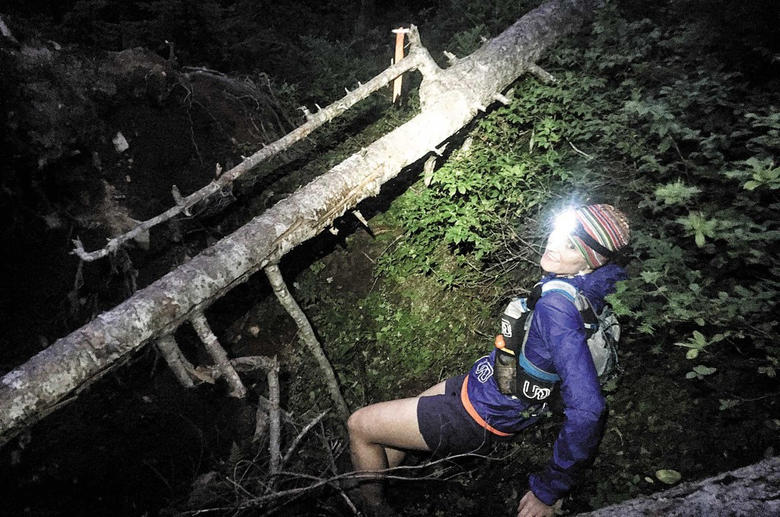Some of the lessons from ultrarunners involve prepping ahead of time while others are more focused on how to react in a particular situation when actually on the trail. Nature can be unpredictable so it's important to use these lessons so that you don't put yourself or others in a dangerous situation. While you may not undergo a 200-mile hike (which we don't blame you for), these lessons are still applicable to any time spent in the wilderness.
Ultrarunners — those who cover more ground in a day than most do in a month — are basically preppers with a caffeine addiction who flee for fun.
Priority: Water
Ultrarunners set out into the woods on purpose, and like preppers, have to be mostly self-reliant and thoughtful with what they carry. This calls for a delicate balance between carrying the necessary gear and adding too much weight.
Surviving off the grid often requires MacGyver-like improvisation skills, but the most important step is preparation before you leave. “Do research of the area before you go there. Google Maps is a great way,” says Bob Aksamit, a 10-year veteran of the Sheridan County Wyoming volunteer search and rescue team.
Aksamit also recommends going retro, carrying a compass — an old-school one — and paper maps.
Aksamit likes the straw-type systems, such as LifeStraw, because they are inexpensive, small, and lightweight. They’re great for using while you’re at a water source, but it’s tough and tedious to filter larger amounts of water to bring with you. You have to pull the water through the straw, then baby bird it back into a container.
We’d opted to bring the Sawyer Mini, a tiny system that comes with a filter and detachable water pouch. Fill the pouch with dirty water then squeeze it through the filter.
Priority: Shelter
We carried Adventure Medical’s Emergency Bivvy.
“Shelter can be anything from one of those emergency blankets to whatever you can put together out in the field,” Aksamit says. “Rock ledge, tree branches … but stay off the ground because the ground will draw the heat out of you.”
You can get hypothermia in any temperature, Aksamit warned, especially if you’re been pushing hard and your body is depleted.
“If there’s any chance of it being cold bring a sleeping pad, you need that insulating layer,” agrees Bigfoot Race Director Candice Burt.
Burt’s cold weather essentials made up the recommended gear list for Bigfoot runners; at a minimum, a rain jacket, hat, and gloves, and lightweight pants.
“It is absolutely worth bringing the extra weight of safety gear or warm clothing, a tent and a rain fly,” she said. “You could stay in that tent for a long time if you had to.”
Like good rule followers, we’d packed warm clothes to carry with us at all times.
Priority: Medical
The number-one issue we expected were foot problems. Over long distances, be it in an ultra marathon or if you’re hoofing it to your safe zone, you’re inevitably going to have issues with your feet.
“You get down to the basics, and that’s what we’re hitting the ground with every single time,” says Todd Nardi, an emergency medical services provider in Tucson, Arizona, and the medical director of the Bigfoot 200 and Tahoe 200. He recommends preparing your feet for the long haul: Filing your nails short, buffing down callouses, and regularly massaging your feet to promote good blood flow. Good, well-fitting shoes or boots and wicking socks are also on his must list. (Nardi is a big fan of Injinji; we are too.)
If you have an issue, treat it immediately before it worsens. Nardi packs Leukotape, moleskin, and other foot care essentials to treat feet on the fly.
What he doesn’t recommend is popping blisters. “I keep blisters intact because that’s a sterile environment and that’s how it’s going to heal the best,” he says.
We carried tape, bandages, alcohol wipes, and triple antibiotic ointment, just in case.
Priority: Food
Ultrarunners have to go for the most bang for their calorie buck, and tend to carry nutrient-dense noms.
“Berries will only get you so far,” Burt jokes. She prefers to carry real food, things such as cheese, tuna, and salmon pouches, and tortillas. Other good options: almond butter packets, Epic bars, and baby food fruit purees. “Bring food you like to eat, like real food, not just a bunch of gels or bars,” she says. “Once you’re out there it’s so nice to have real food.”
Priority: Self-Defense
“If you do have confrontations, just slowly back out, try not to be aggressive,” Aksamit recommends. “If it’s a mountain lion, you want to face them. Get their attention just like any house cat. Be big with them.”
Our run-for-our-lives muscles were pretty tired, so instead I closed the distance with Jared and we started banging our trekking poles together.
Poles can make a lot of noise, but the lightweight carbon fiber probably wouldn’t make a great weapon. But if this bear/cat/squirrel/hallucination did charge us, I was sure going to try to poke it into submission. “Just be aware,” Aksamit says. “Make noise. Typically any wildlife will get out of your way.”
Are there any other lessons we can learn from ultrarunners?
Article Source: Off Grid Web
